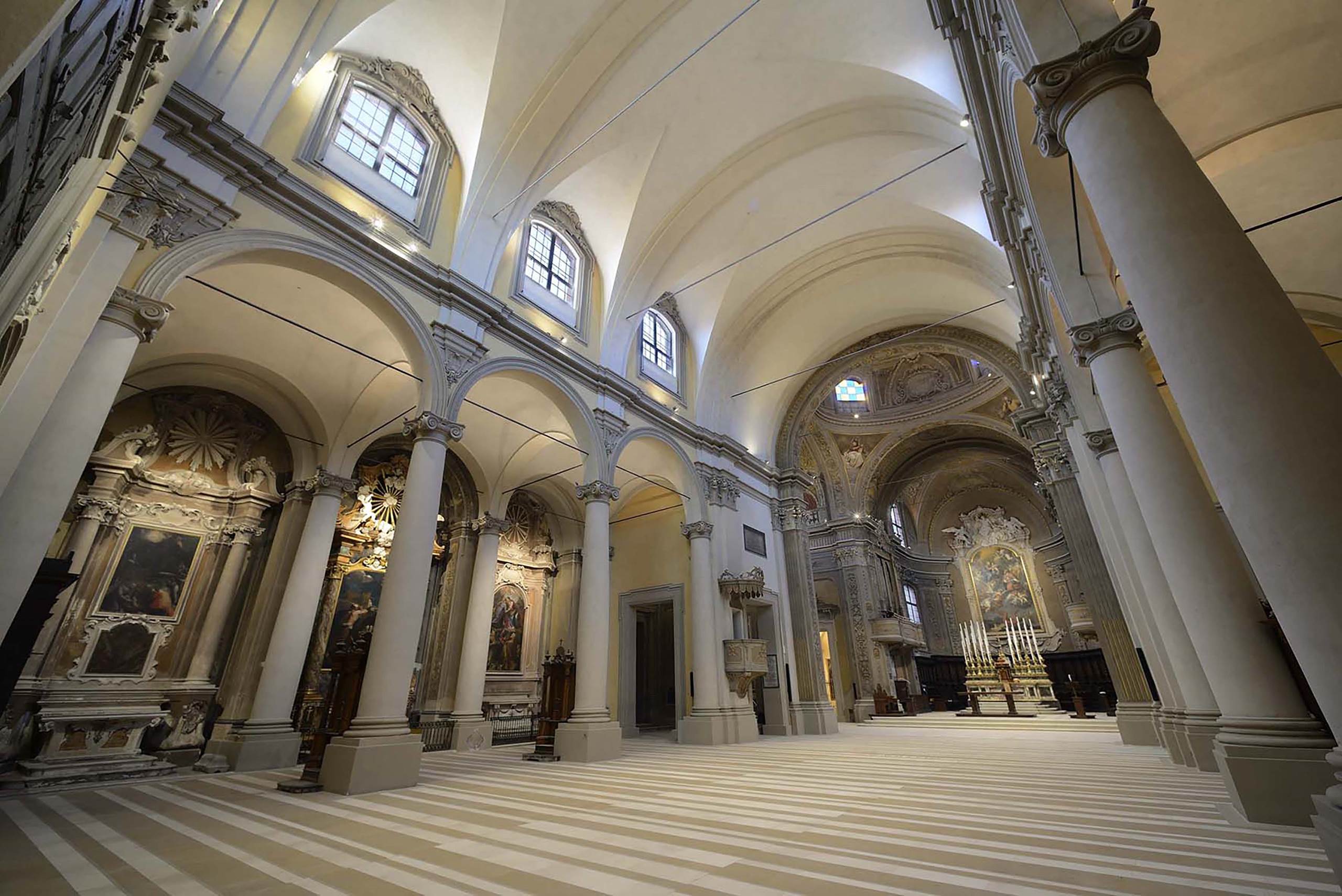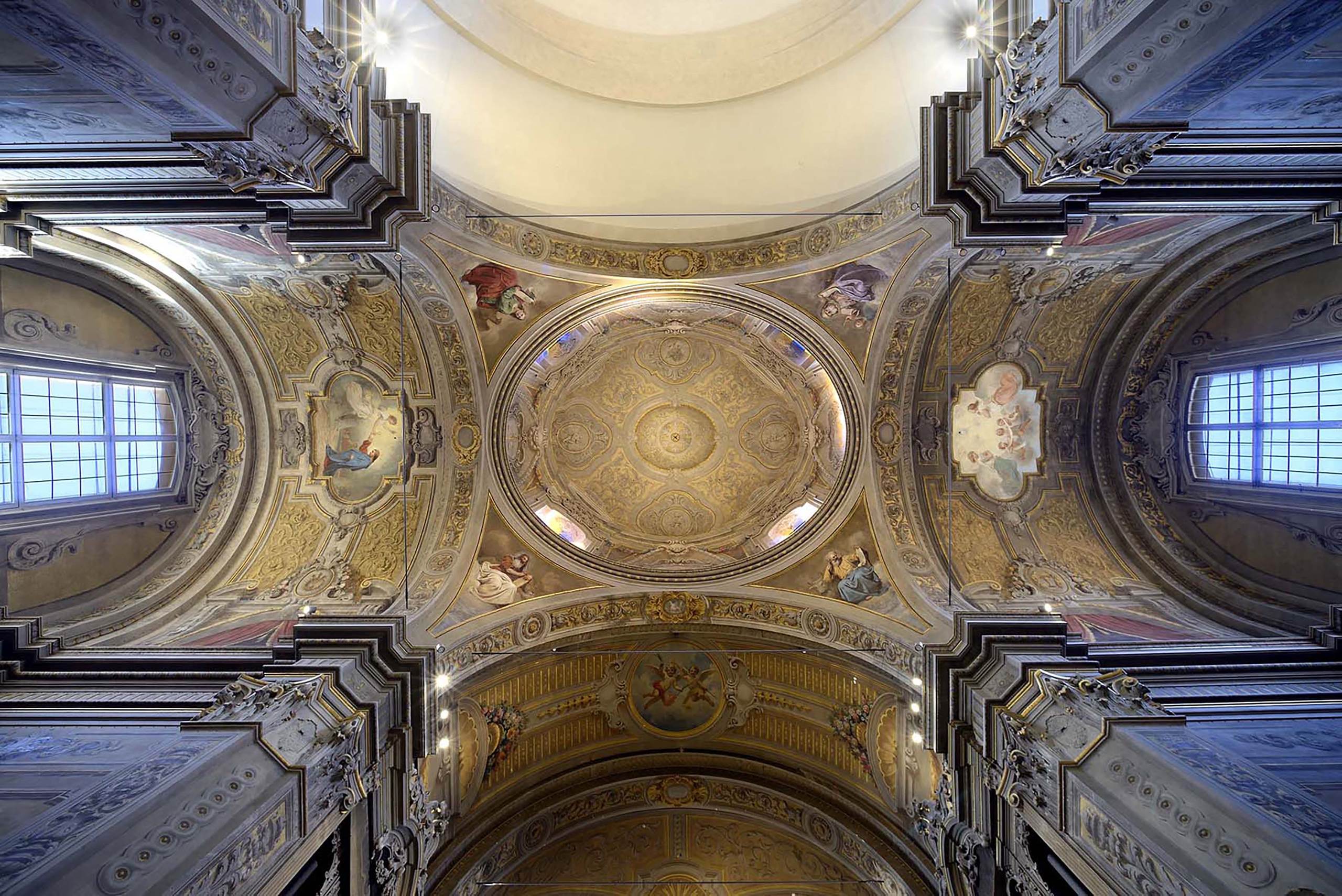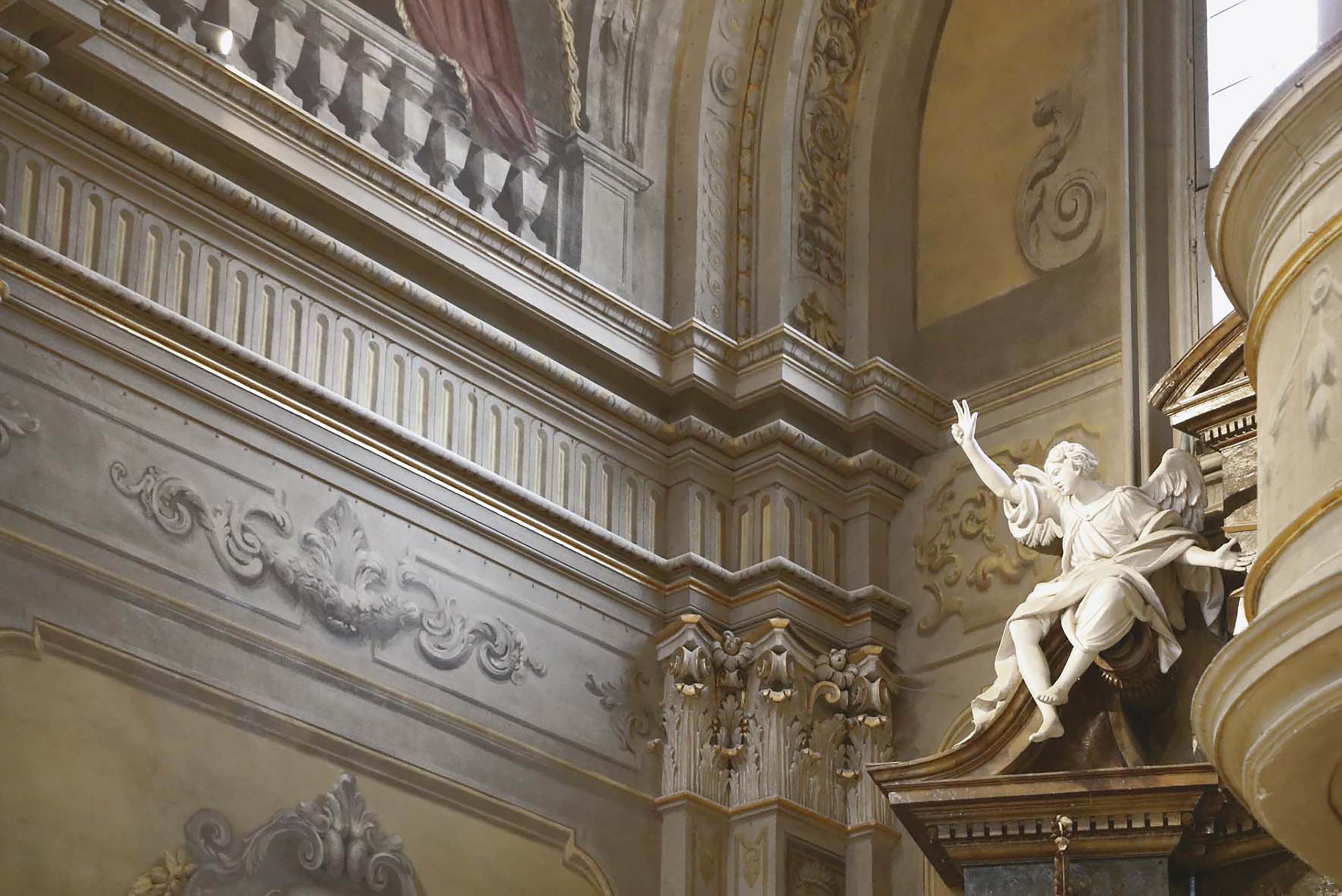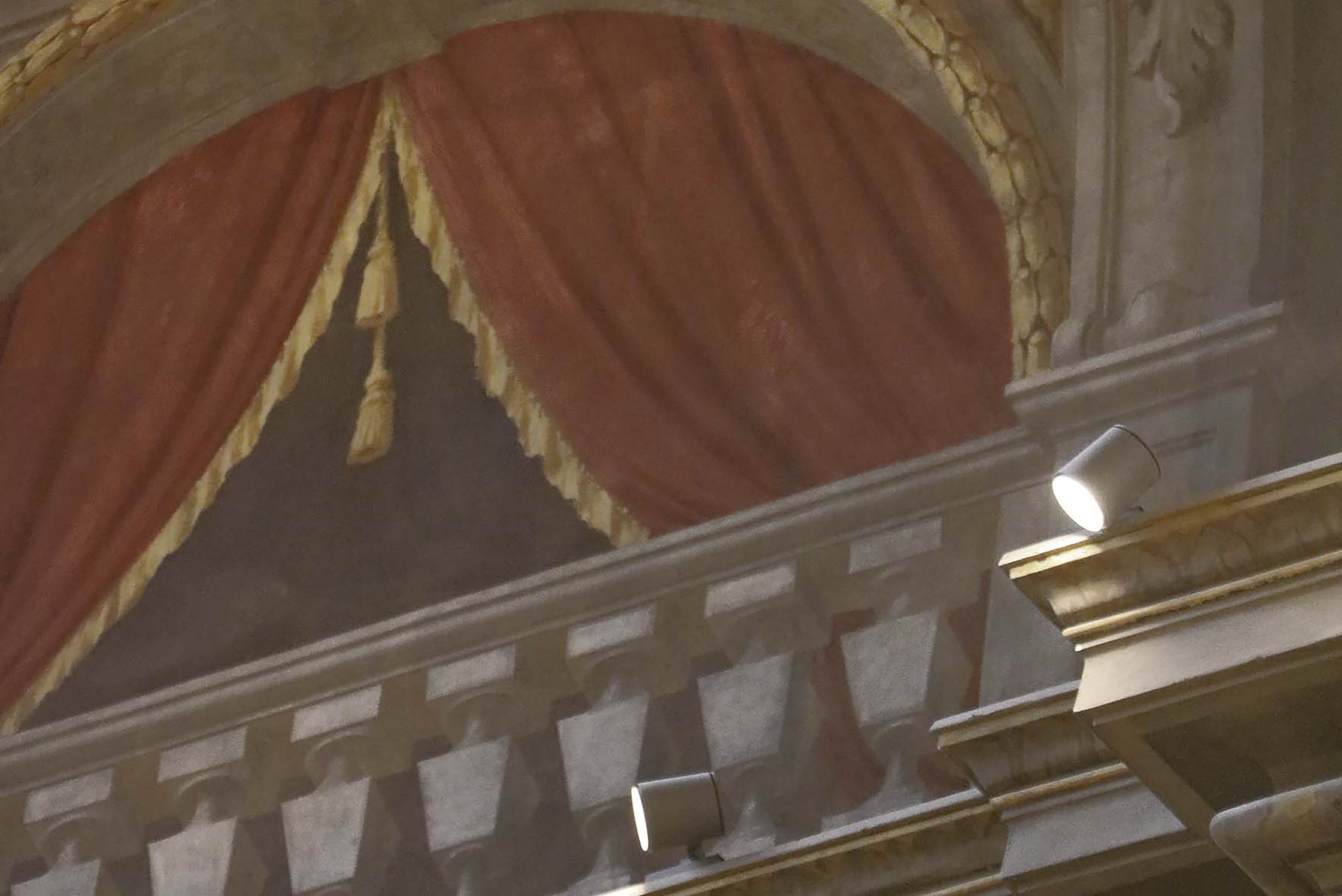Basilica of San Biagio
THE VALUE OF DISCRETION
Located between the provinces of Ferrara, Bologna and Modena, the Basilica of San Biagio in Cento has a history whose roots first took hold in the year 1000 CE. While also possessing late 19th Century decorative painting, the atmosphere for which it is most famous is due to the 18th Century paintings done during the church’s refurbishment by the architect Alfonso Torregiani and once again consecrated to worship.
The serious damage caused by the 2012 earthquake in Emilia has spurred a series of new initiatives aimed, not only at improving the seismic response of the structure, but also to review the obsolete lighting design. During the rewiring of the electrical system, all the luminaires were replaced in order to reflect the space’s usage and to illuminate the works of art contained within it.
Compact and processing a low profile, the new luminaires were positioned on the frame ledges that run at considerable height along the perimetre of the central nave. Luminaires were hidden above the crowns of the colonnades. This created a discreet lighting presence that matches the tones of the basilica while not altering the perception of the space in any way.
The lighting design considers the importance of natural light, which filters through the windows oriented to the south in order to ensure that there are adequate levels of brightness throughout the day. The integration of natural and artificial light allows a significant decrease in energy consumption. The intensity of each artificial light source can be adjusted individually, creating light that is measured and planned for the space’s different liturgical needs, be they casual or solemn.
PRODUCTS USED
Exenia: Museo (Medium and Wide optics, 40W, CRI 85 – 3000K).
Summary
Located between the provinces of Ferrara, Bologna and Modena, the Basilica of San Biagio in Cento has a history whose roots first took hold in the year 1000 CE.
The serious damage caused by the 2012 earthquake in Emilia has spurred a series of new initiatives aimed, not only at improving the seismic response of the structure, but also to review the obsolete lighting design.





